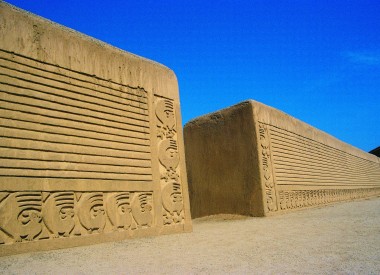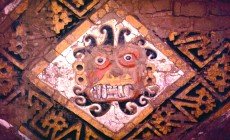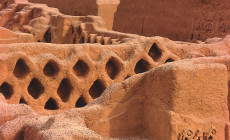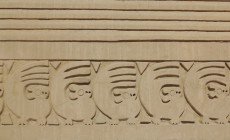-
Latin America
Latin America
- Countries (hidden space)
- Galapagos & Ecuador
- Guatemala
- Mexico
- Panama
- Peru
- Popular Attractions
- Machu Picchu
- Inca Trail
- Easter Island
- Galapagos Islands
- Patagonia
- Rio de Janeiro
- Iguazu Falls
-
Africa
Africa
- Spacer Africa
- South Africa
- Zimbabwe
- Popular Attractions
- Cape Town
- Okavango Delta
- Sossusvlei Dunes
- Victoria Falls
- The Kruger
- The Garden Route
- Masai Mara
-
Asia & Middle East
Asia & Middle East
- Asia
- Borneo (Malaysia)
- Cambodia
- India
- Japan
- Middle East
- Jordan
- Spacer Asia
- Laos
- Sri Lanka
- Uzbekistan
- Vietnam
- Popular Attractions
- Taj Mahal
- Lion Rock (Sigiriya)
- Angkor Wat
- Ha Long Bay
- Kyoto
- Petra
-
Destinations
- Latin America
- Argentina
- Bolivia
- Brazil
- Chile
- Colombia
- Costa Rica
- Galapagos & Ecuador
- Guatemala
- Mexico
- Panama
- Peru
- Asia
- Borneo (Malaysia)
- Cambodia
- India
- Japan
- Laos
- Sri Lanka
- Uzbekistan
- Vietnam
- Middle East
- Jordan
- Southern & East Africa
- Botswana
- Kenya
- Namibia
- South Africa
- Zimbabwe
- Contact Us
-
About
About
Llama Travel provides high quality holidays at the lowest possible prices.
99% recommend us Lower prices - guaranteed Financially protected by ATOL
Chan Chán is the main tourist attraction in the Trujillo and was declared a UNESCO World Heritage Site in 1986. Chan Chán in its entirety consists of nine governor’s palaces and 35 intermediary complexes, in addition to dwellings and temples, such as the Huaca Arco Iris and the Huaca Esmeralda, and it is the largest adobe city in the world. However, the name Chan Chán is generally used to refer to the Tschudi Citadel, which is the best preserved, and most reconstructed, of the various governors’ palaces. The whole city was enormous, covering almost 28 square kilometres, and was home to 35,000 people at its height. There are even theories that the city may have occupied up to 200 square kilometres, and a large Chimú wall is visible on the outskirts of Trujillo. However, when the Spanish arrived in the 16th century Chan Chán was already virtually abandoned. The Chimús strongly resisted conquest by the Incas, and it took over 10 years before the Incas were finally able to defeat them. As punishment for their resistance, the Chimú leaders were taken to Cusco and the population of the city was dispersed, mostly to the city of Chicitoy, built by the Incas.
Chan Chán was the capital of the Chimú Empire and was built between the 9th and 15th centuries. Each governor of Chan Chán built a new complex upon taking charge, and the palace of the previous ruler was left abandoned. Therefore, although there were nine palaces in total by the end, only one at a time was ever occupied. The Tschudi Citadel, one of these palaces, occupies 130,000 square metres and is surrounded by a 13m-high perimeter wall. Entering the citadel, there is a huge open plaza with some friezes decorating the walls. This was used for public ceremonies, possibly including sacrifices. The plaza and friezes have been almost completely reconstructed. Other public sections of the complex include a large administrative centre, which was used for the production of textiles and jewellery, as well as the administration of agriculture and fishing. This includes many impressive friezes, including some fine fishing motifs. This frieze includes some unrestored images, although the wall has been completed with modern restorations. The Chimú people were great fishermen, and it is thought that the fish swimming in opposite directions refer to different sea currents in the area. There are many diamond-shaped decorations in this section, which are thought to represent fishing nets, again demonstrating the importance of the sea in the life of the Chimú people.
Passing the administrative centre, another open plaza is reached. However, this was not a public plaza, and was part of the governor’s residence. Although many people worked in the public sector of the citadel, they all lived in houses outside of the complex. Only the governor and his entourage actually lived inside the palace. The form of architecture changes in the private sector of the citadel, and the friezes and motifs disappear. Indeed, the private plaza has no decorations, unlike the public plaza at the entrance to the complex. There is a giant pool near the plaza, which was probably used to supply water to the complex and possibly to other parts of the city. The pool may also have been used for ceremonial purposes, as the ramp into the pool goes round the walls rather than straight down. There is a burial mound behind the pool, which was used by the ruler people close to him.
The other governors’ palaces are similar in structure, and consist of many of the same aspects. However, they are not very well conserved and they can be dangerous to wander round as muggers often lurk in these ruins.
The Site Museum, on the main road between Trujillo and Huanchaco, is near the entrance to Chan Chán. This includes some ceramics and information on the construction techniques employed by the Chimú people. There is also a giant model of the city of Chan Chán, with a sound and light show and an interesting and informative narrated history of the site. This is normally in Spanish, although if you ask they may play it in English.





